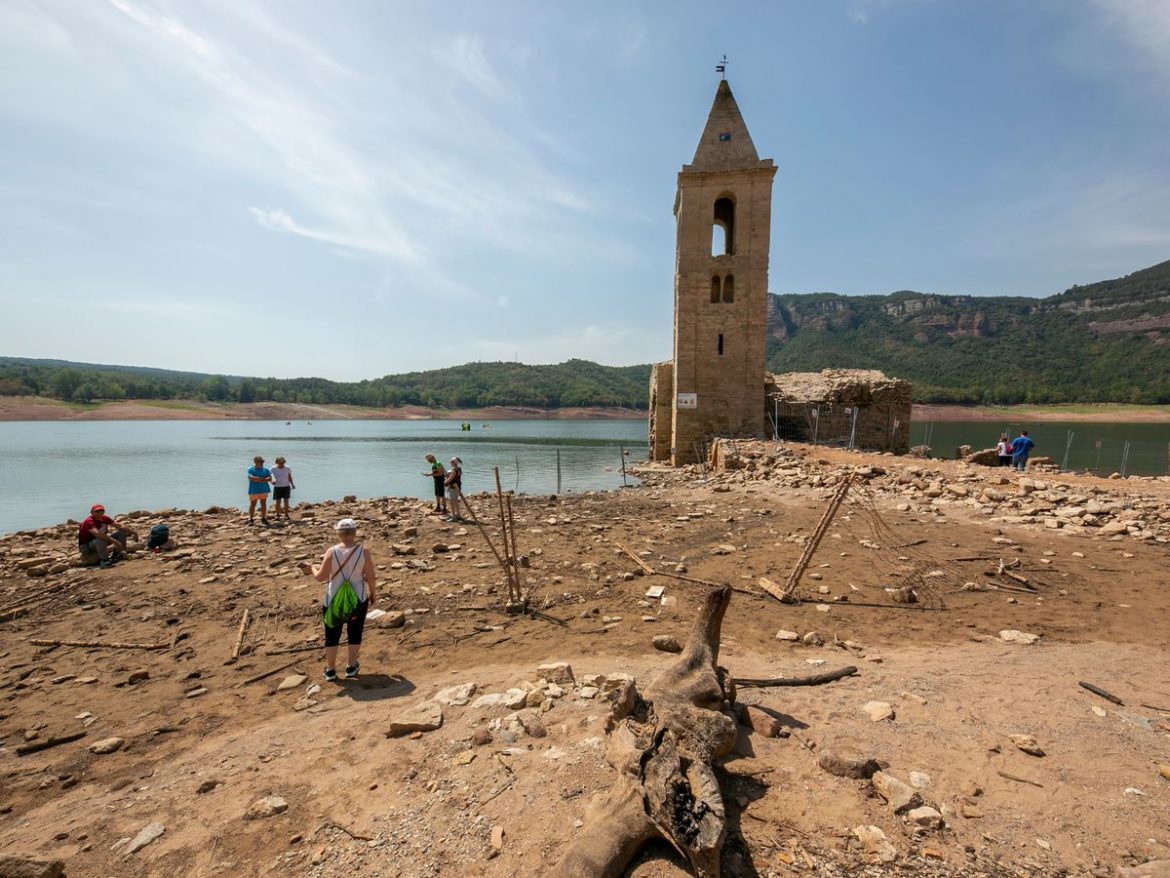In the Sau reservoir, teams in small boats are hard at work hauling out fish with nets. The idea is to remove them before they die and rot in the water, making them unusable for human consumption.
The water level has dropped so low here – to below 10% of the reservoir’s capacity – that there is already a risk the water will be contaminated by silt. Therefore, while the fish are removed, Sau’s remaining water is being emptied downstream to another reservoir.
“We are trying to transfer the water as quickly as we can because the quality right now in the winter was good [but] in the spring it will become bad, and we’re trying to extract all the fish we can find there,” said Samuel Reyes, director of the Catalan Water Agency (ACA).
The Sau reservoir, 100km (about 62 miles) inland from Barcelona, has been supplying water to the city and other towns in the northeastern region of Catalonia for half a century. But in recent months it has become the most visible symbol of the worst drought this area has seen in living memory.
Read Also: campaigners-say-pacific-trade-deal-will-make-mockery-of-uks-climate-ambitions
That is because of the now-notorious sight of the 11th Century church of Sant Romà de Sau, which was submerged when the reservoir was created in 1962.
In times of abundant rain, the building – situated in the reservoir – sat below the water level, but it now stands several metres above the waterline, surrounded by parched earth.
This part of Catalonia has not seen sustained rain in two-and-a-half years. In early March, the reservoir’s water level had dropped to 8% of its capacity, down from 55% a year earlier.
“I’ve never seen it so empty,” said Agustín Torrent, a 70-year-old man who has lived nearby his whole life and who came to look at the church. “It’s sad when you’ve seen [the reservoir] full before. But that’s the way it is. It’s climate change and anyone who says it doesn’t exist, I don’t know what you can say to them.”
Although Catalonia’s situation is particularly worrying much of the country is facing similar challenges, particularly in southern and eastern areas. In mid-March, reservoirs in the Guadalquivir basin of Andalusia averaged 26% of their capacity, one point below the Catalan interior, and in the south-eastern Segura basin, they were at 36%. That compared with 83% capacity in parts of the northwest.
In March, Spain’s meteorological agency AEMET declared that the country as a whole “continues in a situation of meteorological drought which began over a year ago”.
Story adapted from BBC
